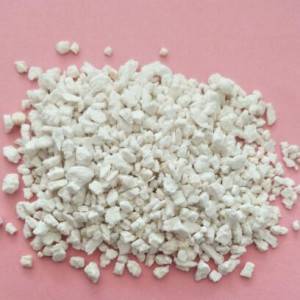Lithium Fluoride LiF
Lithium Fluoride
CAS Number: 7789-24-4
Product Purity: 99.99%min
Formula: LiF
Molecular Weight: 25.94
Melting point: 845°C
Density: 2.64 g/cm3
Size: 1-3mm, 2-5mm, 3-6mm or customized
Packing: 1kg/bag vacuum package or as customer’s require
Lithium fluoride is an inorganic compound with the chemical formula LiF. It is a colorless solid, that transitions to white with decreasing crystal size. Although odorless, lithium fluoride has a bitter-saline taste. Its structure is analogous to that of sodium chloride, but it is much less soluble in water. It is mainly used as a component of molten salts. Formation of LiF from the elements releases one of the highest energy per mass of reactants, only second to that of BeO.
Applications:
Optics
Because of the large band gap for LiF, its crystals are transparent to short wavelength ultraviolet radiation, more so than any other material. LiF is therefore used in specialized UV optics, (See also magnesium fluoride). Lithium fluoride is used also as a diffracting crystal in X-ray spectrometry.
Radiation detectors
It is also used as a means to record ionizing radiation exposure from gamma rays, beta particles, and neutrons in thermoluminescent dosimeters. LiF nanopowder enriched to 96% has been used as the neutron reactive backfill material for microstructured semiconductor neutron detectors (MSND) .
Nuclear reactors
Lithium fluoride (highly enriched in the common isotope lithium-7) forms the basic constituent of the preferred fluoride salt mixture used in liquid-fluoride nuclear reactors. Typically lithium fluoride is mixed with beryllium fluoride to form a base solvent (FLiBe), into which fluorides of uranium and thorium are introduced. Lithium fluoride is exceptionally chemically stable and LiF/BeF2 mixtures (FLiBe) have low melting points (360 C – 459 C) and the best neutronic properties of fluoride salt combinations appropriate for reactor use. MSRE used two different mixtures in the two cooling circuits.
Cathode for PLED and OLEDs
Lithium fluoride is widely used in PLED and OLED as a coupling layer to enhance electron injection. The thickness of LiF layer is usually around 1 nm. The dielectric constant (or relative permittivity) of LiF is 9.0











